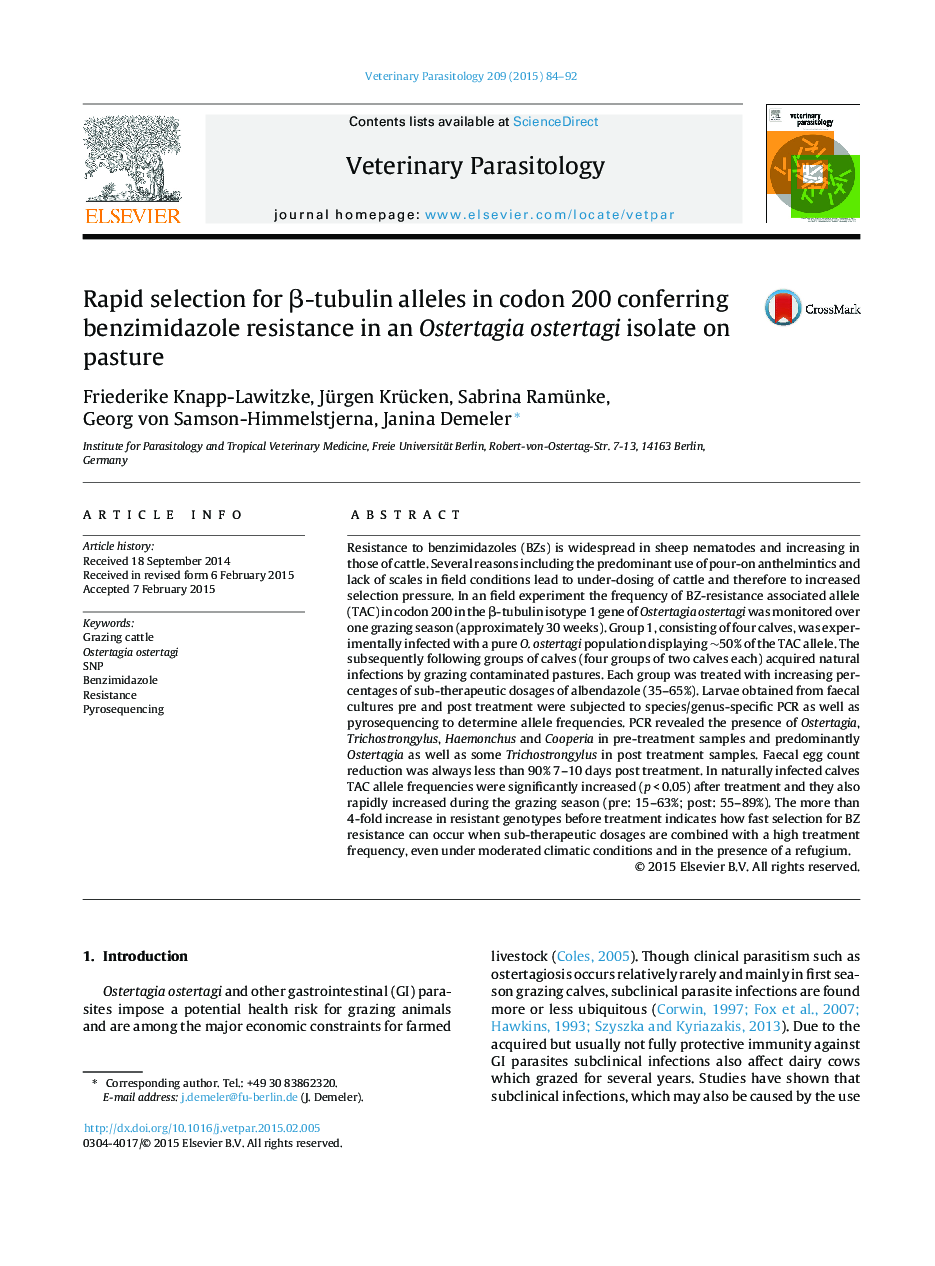| Article ID | Journal | Published Year | Pages | File Type |
|---|---|---|---|---|
| 5802562 | Veterinary Parasitology | 2015 | 9 Pages |
â¢Rapid selection of benzimidazol resistance after four sub-therapeutic treatments.â¢Increase in resistant genotypes despite susceptible larvae in refugia.â¢Successful pyrosequencing using field samples containing multiple nematode species.â¢Species-specific benzimidazole resistance monitoring possible using pyrosequencing.
Resistance to benzimidazoles (BZs) is widespread in sheep nematodes and increasing in those of cattle. Several reasons including the predominant use of pour-on anthelmintics and lack of scales in field conditions lead to under-dosing of cattle and therefore to increased selection pressure. In an field experiment the frequency of BZ-resistance associated allele (TAC) in codon 200 in the β-tubulin isotype 1 gene of Ostertagia ostertagi was monitored over one grazing season (approximately 30 weeks). Group 1, consisting of four calves, was experimentally infected with a pure O. ostertagi population displaying â¼50% of the TAC allele. The subsequently following groups of calves (four groups of two calves each) acquired natural infections by grazing contaminated pastures. Each group was treated with increasing percentages of sub-therapeutic dosages of albendazole (35-65%). Larvae obtained from faecal cultures pre and post treatment were subjected to species/genus-specific PCR as well as pyrosequencing to determine allele frequencies. PCR revealed the presence of Ostertagia, Trichostrongylus, Haemonchus and Cooperia in pre-treatment samples and predominantly Ostertagia as well as some Trichostrongylus in post treatment samples. Faecal egg count reduction was always less than 90% 7-10 days post treatment. In naturally infected calves TAC allele frequencies were significantly increased (p < 0.05) after treatment and they also rapidly increased during the grazing season (pre: 15-63%; post: 55-89%). The more than 4-fold increase in resistant genotypes before treatment indicates how fast selection for BZ resistance can occur when sub-therapeutic dosages are combined with a high treatment frequency, even under moderated climatic conditions and in the presence of a refugium.
